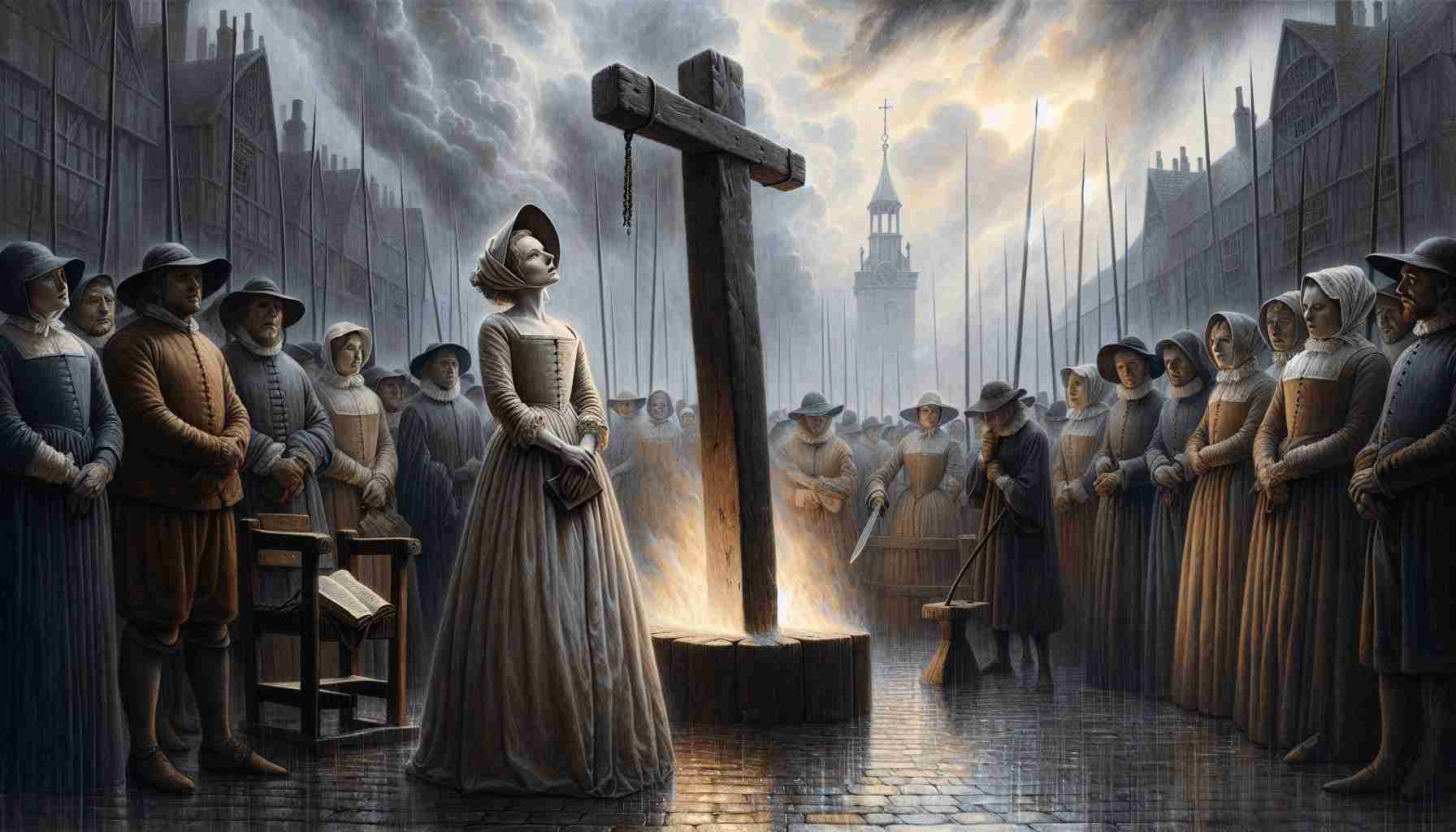

June 18, 1546
Smithfield Market, London
The stake stood like a monument of dread beneath the bleak English sky. Rain had threatened all morning but held off—perhaps at the mercy of heaven, or perhaps to grant spectators a clearer view. By noon, they had gathered thick at the edges of the cobbled square: merchants with bloodied aprons, curious apprentices, and wide-eyed parish matrons clutching prayer beads tighter than ever. All eyes searched for the girl in white.
Anne Askew, twenty-five years old and bruised beneath her linen dress, was carried to the pyre on a chair. Her body had betrayed her long before the verdict. Torture racks at the Tower had stretched tendon from bone until she could no longer stand, yet she held her jaw firm, fire in her pale eyes. Even now, bound to the stake and lashed upright beside two others who would share her fate, she seemed more statue than woman—unmoving, mouth whispering Psalms not to be heard over the pant of hissing torches.
Few could understand why she, born of Lincolnshire gentry, would choose to defy King Henry’s edicts. Yet to Anne, the king’s law held no throne above Truth. She had declared, calmly and in writing, that the bread of the mass did not become Christ’s physical flesh—that it was a remembrance, not a miracle stuffed into a wafer. For this, she was branded a heretic, opponent of the doctrine of transubstantiation, and therefore, enemy of the crown.
There had been interrogations. Not for her confession—that had come freely, in ink and resolve—but to uncover who among the nobility shared her belief. When she spoke no names, the rack was turned again. Chancellor Wriothesley himself had worked the handle, fingers white around the wood, the air filled with her cries. But even in agony, her words held: “I am not come here to deny my Lord.”
She had found comfort in smuggled leaflets from Tyndale’s translation, read by candle stumps in the Tower. Revelation 12:11 was the verse she recited most: “And they overcame him by the blood of the Lamb, and by the word of their testimony; and they loved not their lives unto the death.”
As the executioner stepped forward, baring the flame, silence swept the crowd. The cord was set, the pitch ignited, and the fire caught at the kindling’s edge. Smoke rose in solemn ribbons toward a darkening sky.
Anne’s voice—soft but clear—threaded its way through the murmurs. The words were not pleas, but praise. A Psalm again, or perhaps the Lord’s Prayer.
A hush fell over the jeering few. She did not scream.
Even hardened guards averted their eyes as the flames climbed higher. Her frame, broken even before the fire reached it, seemed not to twist in fear or agony. Instead, it bowed forward gently as if stooping to embrace eternity.
One woman, veiled in black behind the crowd, wept openly, not for terror, but for the strange calm that filled the square. A child whispered, “Is she an angel?” But no one answered.
When the fire died, the ashes still carried her defiance—soft and grey as snowfall, dusting the boots of those who remained.
In the weeks that followed, whispers grew—not of her crime, but of her courage. Her words, copied clandestinely from notes dictated between tortures, passed among reformers like sacred relics. The Examinations of Anne Askew became both testimony and trumpet: her theology in plain woman’s tongue, her reasoned stance laid beside her wounds.
Anne did not live to see the Reformation flower in England. Yet her blood watered its roots. Later generations would speak of her not as a traitor but as a martyr. One who, in a world of chained Bibles and chained beliefs, dared to speak unaided, unwed, and unbent.
In the corners of England’s cathedrals, her name was whispered like prayer.
She had no monument, no etched stone. Only the memory of a woman who held to truth at the cost of her flesh, and in so doing, taught the world what faith looks like when kings cannot conquer it.